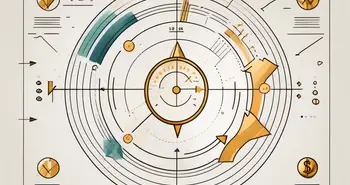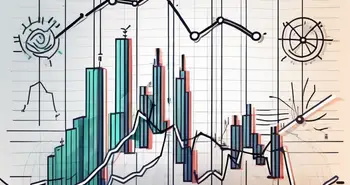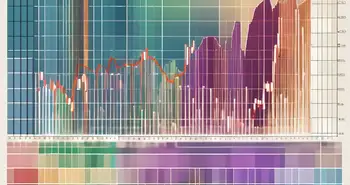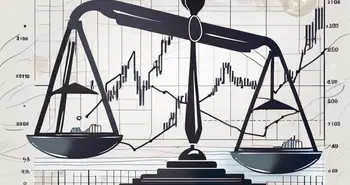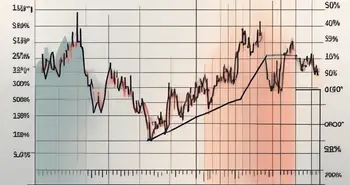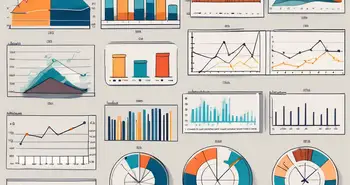The Complete Guide to Point and Figure Chart
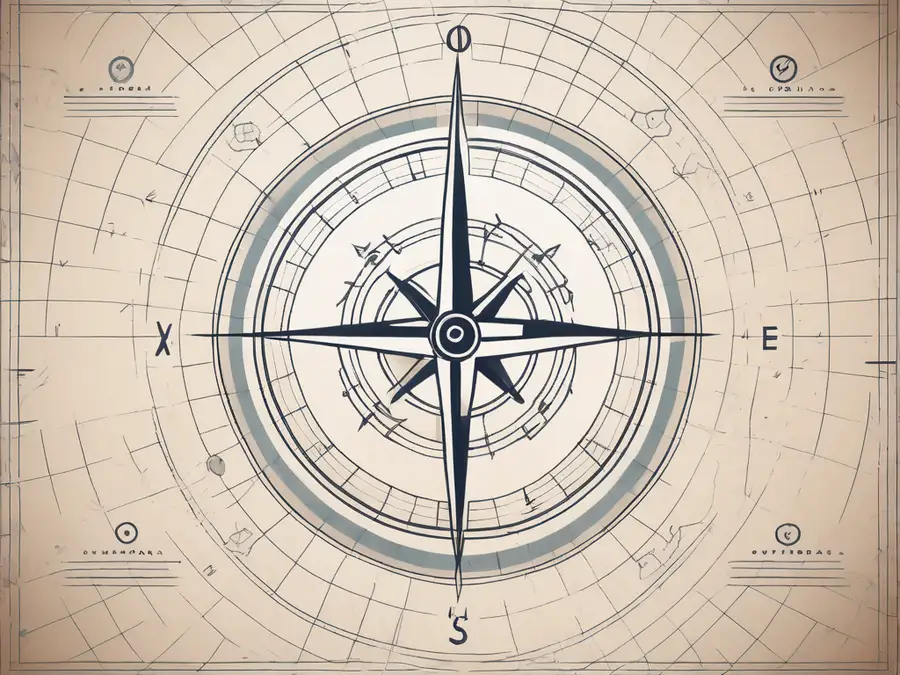
In my years of experience as a trader and chart analyst, I have found the Point and Figure Chart to be an invaluable tool. Its unique visual representation of price movements helps me to identify trends, support and resistance levels, and potential trading opportunities. In this ultimate guide, I will take you through everything you need to know about Point and Figure Charts, from understanding the basics to implementing effective trading strategies.
Understanding the Basics of Point and Figure Chart
The History and Evolution of Point and Figure Chart
The Point and Figure Chart has a long and intriguing history dating back to the late 19th century. Initially developed by Charles Dow, the co-founder of Dow Jones & Company, this charting method gained popularity among market participants for its simplicity and focus on price movements. Over time, it has evolved into a powerful tool for technical analysis.
Charles Dow's creation of the Point and Figure Chart marked a significant milestone in the world of financial analysis. His innovative approach to charting price movements revolutionized how traders interpreted market data. The simplicity of the chart, with its focus on price changes rather than time intervals, provided a fresh perspective on market trends.
Key Components of Point and Figure Chart
At its core, a Point and Figure Chart comprises two key components: X columns and O columns. These columns represent price movement in a unique way. An X column signifies an upward price movement, while an O column represents a downward price movement. By focusing only on significant price changes, Point and Figure Charts filter out noise and provide a clear picture of market trends.
Each X or O in a Point and Figure Chart represents a specific price movement, creating a visual representation of supply and demand dynamics in the market. This visual simplicity allows traders to quickly identify patterns and trends without being overwhelmed by excessive data. The columns in the chart form patterns that can signal potential trading opportunities based on historical price behavior.
The Importance of Point and Figure Chart in Trading
Point and Figure Charts offer several advantages to traders. Firstly, they help identify trend reversals and establish support and resistance levels with greater accuracy. This enables traders to make informed decisions about entry and exit points. Additionally, Point and Figure Charts eliminate the noise associated with time-based charts, making it easier to spot patterns and trends.
Traders often use Point and Figure Charts in conjunction with other technical analysis tools to confirm signals and enhance their trading strategies. The visual nature of these charts allows for a quick assessment of market sentiment and can provide valuable insights into potential price movements. By incorporating Point and Figure analysis into their trading arsenal, traders gain a unique perspective on market dynamics that can help improve their overall trading performance.
How to Construct a Point and Figure Chart
Choosing the Right Box Size
The box size represents the minimum price movement required to form an X or O column on the chart. Choosing the appropriate box size is crucial as it affects the sensitivity and clarity of the chart. Smaller box sizes provide more detailed information and are ideal for short-term traders, while larger box sizes are suitable for long-term investors.
Deciding on the Reversal Amount
The reversal amount determines how many boxes are required to change the direction of a column. By setting a smaller reversal amount, you can capture minor price fluctuations, while a larger reversal amount filters out short-term noise and focuses on significant price movements. The choice of reversal amount depends on the volatility and trading style of the asset you are charting.
Plotting the Price Movements
Once you have determined the box size and reversal amount, you can start plotting the price movements on the chart. Each X or O represents a specific price level. When the price reaches a new high or low, you extend the column accordingly. By connecting these columns, you can visualize the overall trend and potential trading opportunities.
Reading and Interpreting Point and Figure Charts
Identifying Support and Resistance Levels
Point and Figure Charts excel at identifying support and resistance levels. Support is represented by a series of X columns, indicating that buyers are stepping in at a particular price level. Resistance, on the other hand, is shown by a series of O columns, signifying selling pressure. These levels can serve as entry or exit points for trades.
Recognizing Chart Patterns
Chart patterns on Point and Figure Charts are a trader's best friend. Patterns such as double tops, double bottoms, and ascending or descending tops and bottoms can provide valuable insights into trend reversals or continuations. By combining pattern recognition with other technical indicators, you can further improve your trading decisions.
Understanding Trend Lines
Trend lines play a crucial role in Point and Figure Charts. By connecting the tops or bottoms of X or O columns, you can draw trend lines that provide visual confirmation of the prevailing trend. Breakouts above or below these trend lines can signal potential trading opportunities.
Strategies for Trading with Point and Figure Charts
Breakout Strategy
A breakout strategy involves entering a trade when the price breaks above or below a significant level of support or resistance. Point and Figure Charts can help identify these breakout points with precision. By waiting for a breakout and confirming it with other technical indicators, you can increase the probability of a successful trade.
Reversal Strategy
Reversal strategies aim to capture trend reversals and profit from the subsequent price movements. Point and Figure Charts excel at identifying trend reversal patterns, such as double tops or bottoms. By waiting for the trend to show signs of exhaustion and placing trades accordingly, you can take advantage of market shifts.
Continuation Pattern Strategy
Continuation patterns indicate that an existing trend is likely to continue after a pause. Point and Figure Charts can help identify these patterns, such as bullish or bearish flags. By entering trades in the direction of the prevailing trend after a brief consolidation, you can ride the trend and maximize your profits.
My personal advice to aspiring traders is to spend ample time practicing and studying Point and Figure Charts. As with any technical analysis tool, it requires patience and experience to fully harness its potential. Combining Point and Figure Charts with other indicators and trading strategies can further enhance your trading decisions.
FAQ
What is a Point and Figure Chart?
A Point and Figure Chart is a unique charting method that focuses solely on significant price movements. It uses X columns to represent upward price movement and O columns to represent downward price movement. This visual representation helps traders identify trends, support and resistance levels, and potential trading opportunities.
How do I construct a Point and Figure Chart?
To construct a Point and Figure Chart, you need to choose the appropriate box size and reversal amount. The box size determines the minimum price movement required to form an X or O column, while the reversal amount refers to the number of boxes required to change the column's direction. Once these parameters are set, you can plot the price movements on the chart.
What are some effective trading strategies for Point and Figure Charts?
There are several effective trading strategies for Point and Figure Charts. The breakout strategy involves entering trades when the price breaks above or below a significant level of support or resistance. The reversal strategy aims to capture trend reversals, while the continuation pattern strategy focuses on riding the existing trend after a brief consolidation.
How can Point and Figure Charts help with trend identification?
Point and Figure Charts are excellent tools for trend identification. By connecting the tops or bottoms of X or O columns, you can draw trend lines that visually confirm the prevailing trend. Additionally, Point and Figure Charts can help identify trend reversal patterns, allowing traders to adjust their trading strategies accordingly.
By understanding the basics of Point and Figure Charts, constructing them effectively, and implementing various trading strategies, you can elevate your trading game to the next level. In the dynamic world of trading, having an edge can make all the difference. Point and Figure Charts provide that edge by allowing you to see the market through a unique lens.
Ready to take your trading to the next level with the insights from Point and Figure Charts? Embrace the future of investing with Morpher, the revolutionary platform that combines the power of blockchain technology with zero fees, infinite liquidity, and the flexibility of fractional investing. Whether you're looking to trade stocks, cryptocurrencies, or even unique markets like NFTs, Morpher offers a seamless and innovative trading experience. Sign up now to get your free sign-up bonus and start trading on a platform that's as advanced as your trading strategies. Sign Up and Get Your Free Sign Up Bonus.

Disclaimer: All investments involve risk, and the past performance of a security, industry, sector, market, financial product, trading strategy, or individual’s trading does not guarantee future results or returns. Investors are fully responsible for any investment decisions they make. Such decisions should be based solely on an evaluation of their financial circumstances, investment objectives, risk tolerance, and liquidity needs. This post does not constitute investment advice.

Painless trading for everyone
Hundreds of markets all in one place - Apple, Bitcoin, Gold, Watches, NFTs, Sneakers and so much more.

Painless trading for everyone
Hundreds of markets all in one place - Apple, Bitcoin, Gold, Watches, NFTs, Sneakers and so much more.


